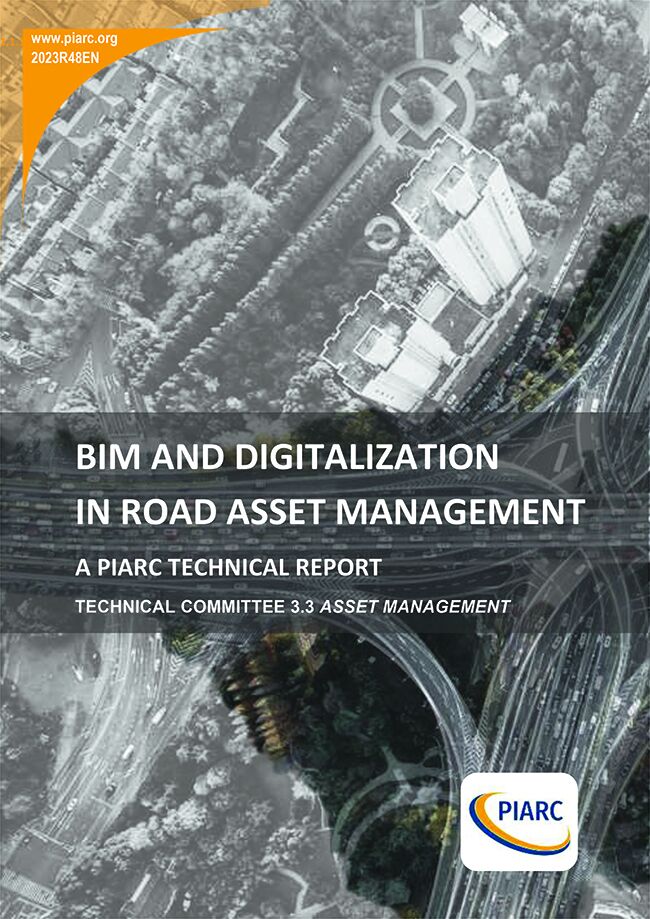BIM and Digitalization in Road Asset Management

The objective of the work carried out by WG 1 within the field of BIM and Digitalization has been fundamentally to carry out an analysis of the state of the art worldwide of how Digitalization is being applied in Road Asset Management and the BIM methodology. within the same area.
From the content of the document, it can be deduced how the level of digitalization in Road Asset Management has reached a high level of technology, however, from what the reader of this report can deduce, there is still a long way to go in the application of BIM to this area. This statement is based on the results of an extensive survey carried out among road administrations in different countries and with highway concessionaires. The content of this survey can be seen in section 9.
Considering the results obtained, this document fundamentally includes a state of the art and different examples of digital applications in the management of road assets as well as certain general lines of how some of the highway agencies are directing their efforts in the coordination and preparation of certain documents that will serve as a basis for the application of BIM in Road Asset Management.
The first part of the document constitutes a guide to contextualize BIM, taking the opportunity to compile basic concepts that will serve to recognize that this methodology has a great advantage in the building and industrial sector over the application in the design of linear works and, therefore, much more. even in later phases of the life cycle of a linear work such as roads. Focusing on aspects that have to do with conservation and maintenance as the longest period in the life of an infrastructure, it can be seen, again, that there are few advances and great difficulties in applying this methodology to infrastructures designed and built long ago (they are the most road networks in developed countries and even in developing countries).
In support of strategies that can be considered by road agencies immersed in this process or that are interested in it, a series of practical cases and information on the application of BIM in the management of road assets are provided. Specifically in Spain, Belgium, Mexico, France, Japan, and Korea.
The second part of the document addresses the technological level and describes certain methodologies linked to digitalization within the field of road asset management. Examples are shown and some procedures that may be the most widespread worldwide are described. Likewise, everything described above is supported by the results of surveys of the same countries and agencies as in the case of BIM.
In the final conclusions, certain aspects of the content of the document are synthesized, the high degree of technology in the digitalization of road assets is expressed and the need to coordinate and define the dimension of BIM in this field is reinforced.
Information sheet
- Date: 2024
- Author(s): Comité technique / Technical Committee / Comité Técnico 2020-2023 3.3 Gestion du patrimoine routier / Asset Management / Gestión de activos viales
- Domain(s): Road Assets Management
- Type: 2023R48EN - BIM and Digitalization in Road Asset Management - PIARC Technical Report
- PIARC Ref.: 2023R48EN
- ISBN: 978-2-84060-752-6
- Number of pages: 74